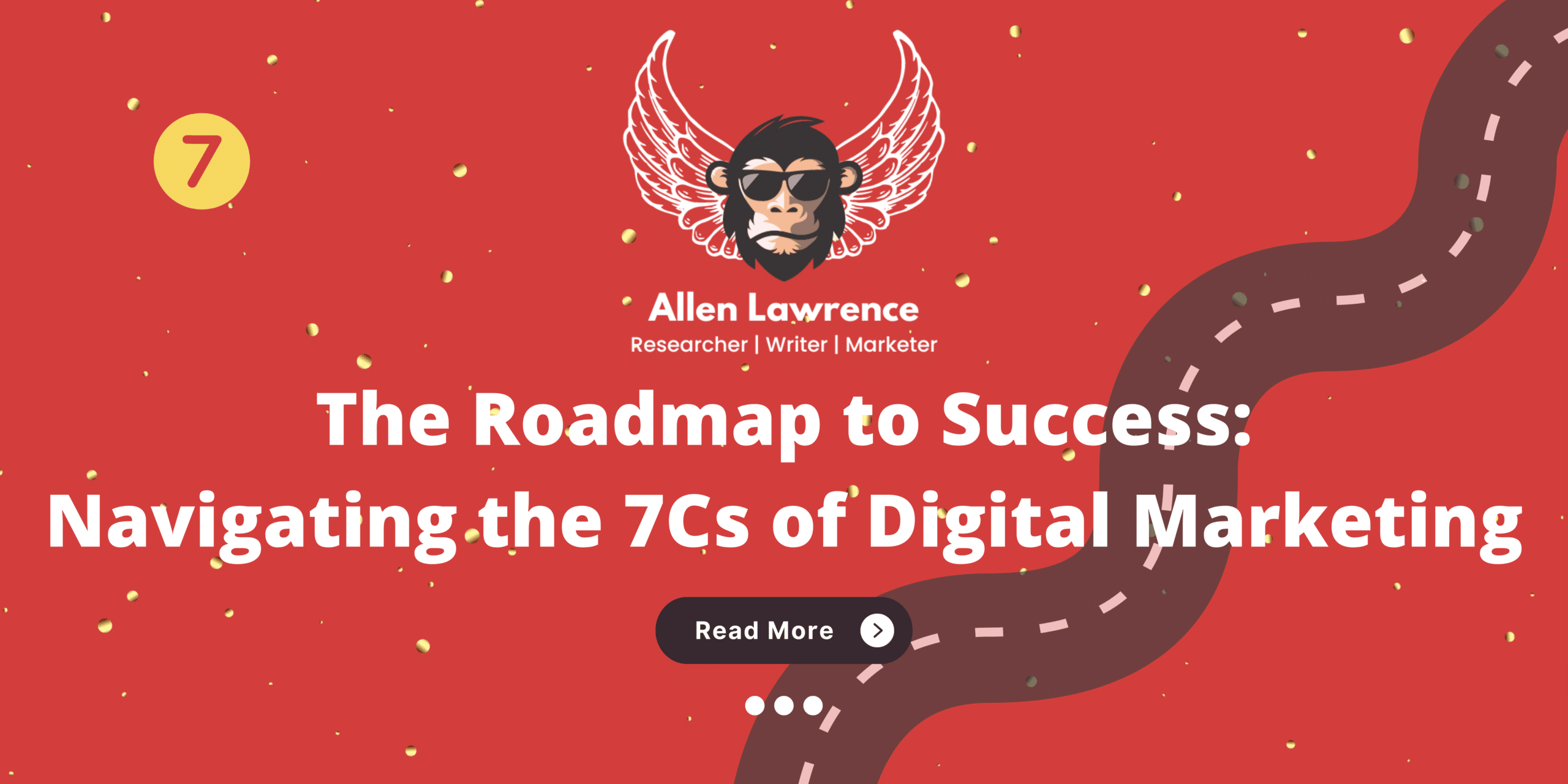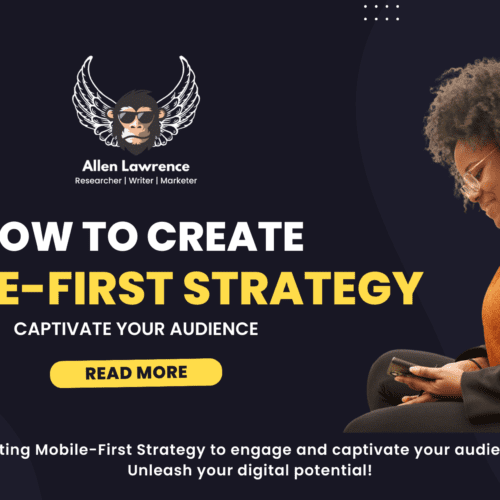Introduction
In today's ever-evolving landscape, digital marketing has emerged as a vital component for businesses to succeed and thrive. Understanding the significance of digital marketing and its impact on achieving success is crucial for staying ahead of the competition. This comprehensive article explores the 7Cs framework and its role in helping businesses navigate the dynamic world of digital marketing. From the foundation of compelling content to tailoring marketing efforts, reaching the right audience, crafting effective brand messages, building a strong brand identity, fostering community engagement, optimizing conversions, and more, this article provides a roadmap to digital marketing success.
Content: The Foundation of Digital Marketing
The role of compelling content in digital marketing
Compelling content lies at the heart of any successful digital marketing strategy. It is the driving force behind engaging and captivating your target audience. High-quality content not only attracts potential customers but also establishes your brand as a thought leader and a reliable source of information. By providing valuable, relevant, suitable to intent content, you can establish trust, build brand loyalty, and increase customer engagement.
Creating valuable and engaging content for target audiences
To create content that touch your target audience, it is essential to understand their needs, preferences, and pain points. Conducting thorough audience research enables you to identify their interests, challenges, and aspirations. By addressing these effectively through your content, you can capture their attention and provide them with the information they seek. Whether it's through informative blog posts, engaging videos, or interactive infographics, the key is to deliver value and create a meaningful connection with your audience.
Content marketing strategies and best practices
Effective content marketing requires a well-defined strategy that aligns with your business goals. Developing a content calendar, identifying relevant topics, and incorporating SEO best practices are vital steps in maximizing the reach, engagement and impact of your content. Additionally, leveraging various content formats and distribution channels, such as social media, email marketing, and guest blogging, can amplify your content's visibility and reach a wider audience. By continuously analyzing and optimizing your content strategy, you can drive meaningful results and achieve your marketing objectives.
Context: Tailoring Marketing Efforts to the Audience
Understanding the context of the target audience
To effectively tailor your marketing efforts, it is super-important to gain a deep understanding of your target audience's context. This involves analyzing their demographics, behaviors, preferences, and cultural nuances. By leveraging market research, customer surveys, and data analytics, you can discover valuable insights about your audience. These insights enable you to create personalized marketing messages that resonate with their specific needs and motivations.
Analyzing demographics, behaviors, preferences, and cultural nuances
Demographic factors, such as age, gender, location, language and income, provide valuable information about your target audience's characteristics. Understanding their behaviors, such as online habits, browsing patterns, and purchasing preferences, helps you tailor your marketing strategies accordingly. Moreover, considering cultural nuances and preferences allows you to create culturally sensitive and inclusive marketing campaigns.
Personalizing marketing messages and experiences
Personalization is key in today's digital landscape. By segmenting your audience based on their preferences and behaviors, you can deliver tailored marketing messages and experiences. Utilize marketing automation tools, customer relationship management (CRM) systems, and personalized email campaigns to engage with your audience on an individual level. Providing personalized recommendations, exclusive offers, and relevant content enhances the overall customer experience and fosters long-term relationships.
Channels: Reaching the Right Audience
Exploring various digital marketing channels
Digital marketing offers a multitude of channels to reach and engage with your target audience. Social media platforms, search engines, email marketing, content syndication, influencer partnerships, and paid advertising are just a few examples of channels that can help you expand your brand's online presence. Each channel serves a unique purpose, and understanding your audience's preferred channels is crucial for maximizing your marketing efforts.
Leveraging social media platforms, search engines, email marketing, etc.
Social media platforms provide a powerful route to building brand awareness, engaging audiences, and driving website traffic. By crafting compelling social media campaigns and utilizing targeted advertising, you can effectively reach and connect with your audience. Search engine optimization (SEO) techniques help improve your website's visibility in search engine results, driving organic traffic. Email marketing allows you to nurture leads, deliver personalized messages, and build customer loyalty.
Channel selection based on target audience and campaign objectives
When selecting digital marketing channels, it is important to consider your target audience's online behavior and preferences. Additionally, aligning the channel selection with your campaign objectives is crucial. For example, if your goal is to create brand awareness, social media platforms may be the ideal choice. However, if your focus is lead generation, a combination of search engine marketing and email marketing might be more effective. Regularly analyze channel performance, track metrics, and optimize your strategy accordingly.
Communication: Crafting Effective Brand Messages
Importance of clear and concise brand messaging
Clear and concise brand messaging is essential for capturing your audience's attention and effectively communicating your value proposition. Your brand message should clearly articulate what sets you apart from competitors, highlight the benefits you offer, and resonate with your target audience. Avoid jargon and complex language, and focus on delivering a message that is easily understood and memorable.
Developing a unique value proposition
A strong and unique value proposition differentiates your brand in a crowded marketplace. It showcases the unique benefits and value you provide to your customers. To develop a compelling value proposition, identify your target audience's pain points, understand their needs, and highlight how your product or service solves their problems in a distinct and valuable way.
Storytelling techniques to enhance brand communication
Storytelling is a powerful tool that can captivate your audience, evoke emotions, and create a lasting impression. By weaving narratives that connect with your audience's aspirations and values, you can establish an emotional bond. Incorporate storytelling techniques in your brand messaging, content marketing, and advertising campaigns to engage your audience on a deeper level.
Consistency: Building a Strong Brand Identity
Establishing a consistent brand voice and visual identity
Consistency in branding is crucial for building a strong and recognizable brand identity. Establishing a consistent brand voice ensures that your messaging remains cohesive across all marketing channels and touchpoints. Additionally, creating a visually cohesive brand identity, including a consistent color palette, logo, typography, and design elements, helps reinforce your brand image and enhances brand recognition.
Brand guidelines and their implementation
Developing comprehensive brand guidelines is essential for maintaining consistency in your marketing efforts. Brand guidelines outline the preferred tone of voice, brand personality, visual elements, and usage guidelines. By adhering to these guidelines, both internal and external stakeholders can effectively represent your brand consistently. Ensure that brand guidelines are easily accessible and regularly updated to reflect any changes or evolutions in your brand strategy.
Reinforcing brand consistency across all marketing touchpoints
Consistency should be maintained across all marketing touchpoints, including your website, social media profiles, advertising campaigns, packaging, and customer service interactions. Each interaction is an opportunity to reinforce your brand's values and create a cohesive brand experience. Regularly audit your marketing materials to ensure consistency and make necessary adjustments to maintain a strong and unified brand identity.
Community: Building Relationships and Engaging Customers
Creating an online community around the brand
Building an online community allows you to foster a sense of belonging and loyalty among your customers. Encourage engagement, discussions, and user-generated content related to your brand. Provide a platform for customers to connect with each other, share experiences, and offer support. By nurturing a community, you can turn customers into brand advocates and create a positive word-of-mouth effect.
Fostering customer engagement through social media, forums, etc.
Social media platforms, forums, and other online platforms provide avenues for fostering customer engagement. Encourage dialogue by responding to customer inquiries, addressing concerns, and acknowledging feedback. Utilize social listening tools to monitor conversations related to your brand and participate actively. Engage in meaningful conversations, provide valuable insights, and show genuine interest in your audience's opinions.
Implementing user-generated content and influencer marketing strategies
User-generated content (UGC) and influencer marketing are effective strategies for building trust and credibility. Encourage customers to create and share content related to your brand, such as testimonials, reviews, and social media posts. UGC humanizes your brand and showcases real-life experiences. Collaborating with influencers who are relevent in your niche and align with your brand values can amplify your reach and attract new customers.
Conversion: Driving Desired Actions
Optimizing conversion funnels and user journeys
Optimizing conversion funnels and user journeys is essential for guiding your audience toward desired actions. Analyze your website's user experience, identify potential roadblocks, and streamline the conversion process. Use clear and compelling call-to-action (CTA) buttons, minimize form fields, and provide intuitive navigation. A seamless user journey increases the likelihood of conversions and enhances overall user satisfaction.
Call-to-action strategies for maximizing conversions
A well-crafted call-to-action (CTA) prompts users to take specific actions, such as making a purchase, signing up for a newsletter, downloading an ebook or requesting a demo. Use actionable language, create a sense of urgency, and offer incentives to encourage conversions. A strategically placed CTA, supported by persuasive copy, can significantly impact conversion rates.
Tracking and analyzing conversion metrics
Tracking and analyzing conversion metrics provides valuable insights into the effectiveness of your digital marketing quests. Utilize web analytics tools, such as Google Analytics, to monitor key performance indicators (KPIs) like conversion rate, bounce rate, average session duration, and goal completions. Analyze the data to identify trends, optimize your marketing strategies, and make data-driven decisions.
Conclusion
In conclusion, digital marketing plays a vital role in today's business landscape. By effectively navigating the 7Cs framework—Content, Context, Channels, Communication, Consistency, Community, and Conversion—you can position your brand for success. Remember to create compelling content that resonates with your audience, tailor your marketing efforts to their context, leverage the right channels, craft effective brand messages, establish consistency, build a strong community, and optimize conversions. By continuously refining your digital marketing strategy and keeping up with industry trends, you can unlock the full potential of digital marketing and stay ahead of the competition.
FAQs (Frequently Asked Questions)
What are the 7Cs of Digital Marketing?
The 7Cs of Digital Marketing are Content, Context, Channels, Communication, Consistency, Community, and Conversion. These elements provide a comprehensive framework for achieving success in digital marketing by focusing on creating valuable content, tailoring marketing efforts to the audience, leveraging appropriate channels, crafting effective brand messages, establishing consistency, building a strong community, and optimizing conversions.
How can I effectively implement the 7Cs in my marketing strategy?
To effectively implement the 7Cs in your marketing strategy, start by conducting thorough audience research to understand their needs, preferences, and behaviors. Develop a content strategy that delivers valuable and engaging content across relevant channels. Craft clear and concise brand messages that differentiate your brand and resonate with your audience. Establish a consistent brand identity through guidelines and reinforce it across all marketing touchpoints. Build an online community and foster engagement with your customers. Finally, optimize conversion funnels and track key metrics to drive desired actions.
Which digital marketing channels should I focus on?
The choice of digital marketing channels depends on your target audience and campaign objectives. It's essential to understand where your audience spends their time online and what channels they prefer. Social media platforms, search engines, email marketing, content syndication, influencer partnerships, and paid advertising are common channels to consider. Analyze your target audience's online behavior and preferences, and align your channel selection with your campaign goals for maximum impact.
How can I improve conversion rates in my digital marketing efforts?
To improve conversion rates, optimize your conversion funnels and user journeys by analyzing user experience and removing any barriers or friction points. Craft compelling and persuasive call-to-action (CTA) buttons, use actionable language, and create a sense of urgency. Track and analyze conversion metrics using web analytics tools to gain insights into user behavior and make data-driven decisions. Continuously test and refine your marketing strategies to improve conversion rates over time.
Why is community engagement important in digital marketing?
Community engagement is crucial in digital marketing because it fosters a sense of belonging and loyalty among your customers. Building an online community allows customers to connect with each other, share experiences, and offer support. Engaging with your community on social media, forums, and other platforms helps create a positive brand image, encourages word-of-mouth marketing, and builds trust and credibility. A strong community can turn customers into brand advocates and contribute to the growth and success of your brand.




